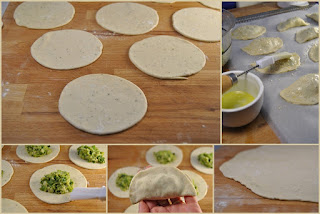Okay I've seen micro greens sold in supermarkets and they are wonderful if some what pricey, but I have never seen pea shoots offered on a general scale to the public. I'm sure you'll find them at fine food markets and specialty stores, but here is the good news, you can grow them very easily, inexpensively and quickly yourself. The best thing about them is that they are winter crops in South Africa, making them an ideal substitute for spring and summer greens. If your smart about it you'll manage a seasonal cross over combination with beat shoots spinach and leek flowers - and now were talking full on flavor!
How to grow pea shoots
Growing pea shoots is so easy and perfect if you're short on space. They grow in pretty much anything - I'm using old yogurt pots and those dishes that mushrooms often come in - just punch some holes in the bottom for drainage. Peas are sowed in winter and normal garden pea plants take months to grow and require more space and effort, but you can plant peas for shoots densely in individual containers or planters and if mother nature willing you'll be able to harvest your first shoots within 2-3 weeks! They like full sun and needless to say you should keep them well watered - that means every day peeps, at least until your plants are a bit more established.
You could go buy pea seeds from your local nursery, or you could pop into the super market and get a bag of whole dried green peas and go crazy with them :)
Grab a container of choice and add some potting soil. Don't use compost in a pot it creates a layer of gas that will impede your plans growth. You're only after the shoots here so you don't need it to be very deep - a few inch will do. Now scatter over some dried peas, I add a small amount of slow release fertilizer obtainable from any garden store or nursery. Lightly cover the seeds with some more potting mixture. Water them gently but well.
Leave them in a sunny spot, they like full sun but keep an eye out in the first 2 weeks, if they get hot and wilted move them into some shade.
They taste best when they're young and crisp - the flavour is delicate and fresh and faintly pea-some. After that the leaves start going a little flimsy.
Uses for pea shoots: Salads (especially when feta is involved!), stir-fries; garnishes for soups. Maybe stick them in those green smoothies. I like just munching a handful of shoots by themselves.







